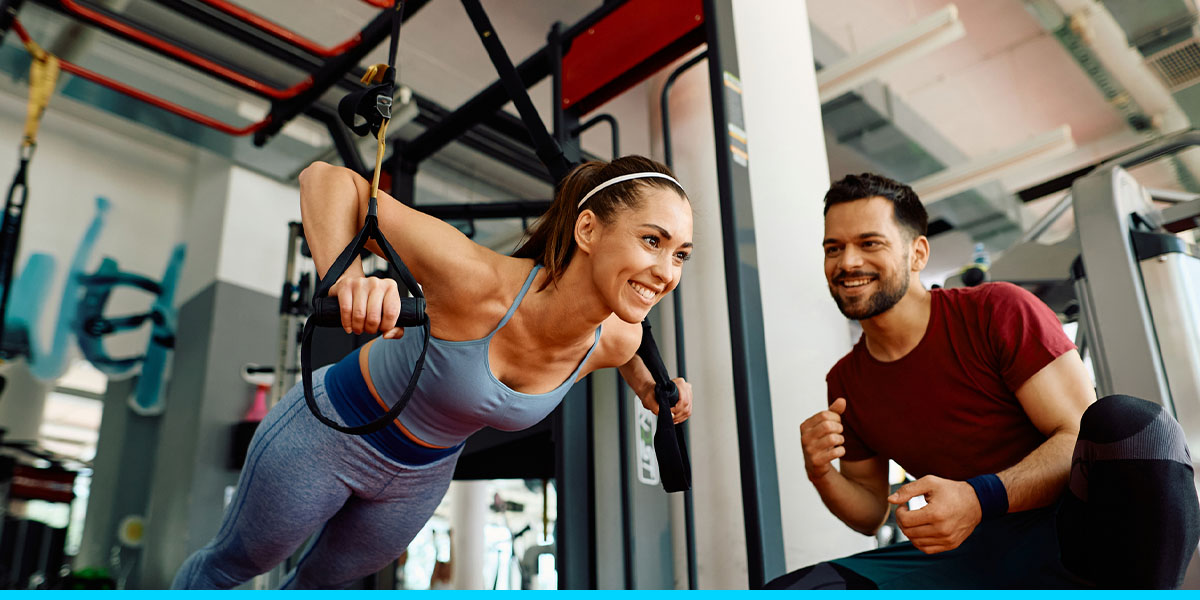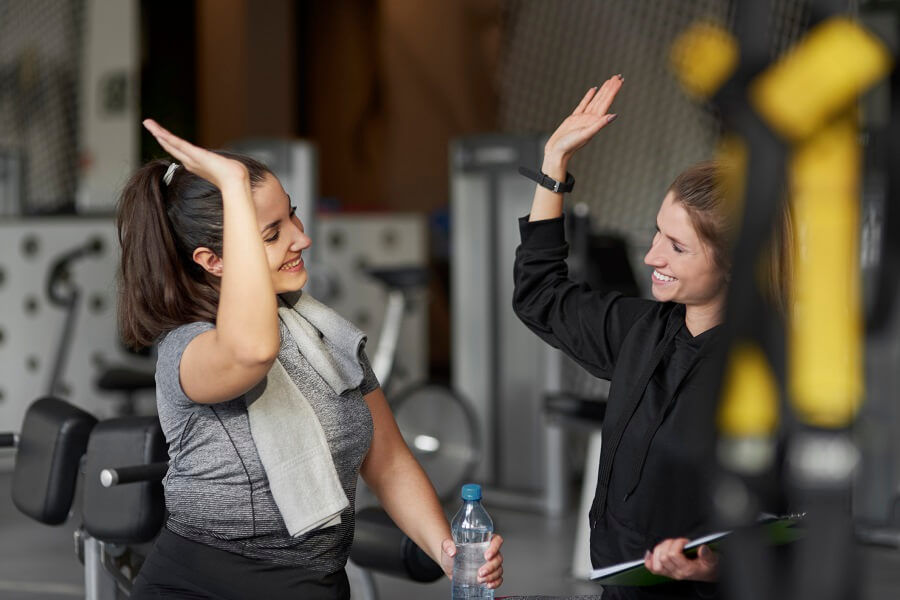Your Guide to Targeting Different Muscle Groups
Your Guide to Targeting Different Muscle Groups
Posted on: December 19, 2023 in Muscles
Working out is a science as much as a physical activity. Understanding the different muscle groups and how they work together helps you create a routine specific to your body’s needs. You’ll see how practical your fitness sessions are when you train complementary muscle groups instead of arbitrary parts.
This guide will explore the main muscle groups that work together and some exercises that best target each one. We’ll also provide a sample weekly workout plan for you to try before committing to anything strenuous.
What Are the Main Muscle Groups?
The main muscles are categorized into six groups — the chest, back, shoulders, arms, legs and core. While the body has a combination of over 600 skeletal, smooth and cardiac muscles, six main muscles are targeted in activities like exercising and training. They are considered the most significant muscles and most strained during physical endeavors. By developing these muscles, all the other muscles are affected and strengthened:
- Chest: This area includes the pectoral muscles situated in front of the chest. This muscle is used while doing push-ups and bench presses.
- Back: The back muscles are divided into the upper back muscle, called the trapezius and the lower back muscle, called the erector spinae. They support good posture and are used in rowing and pull-up exercises.
- Shoulders: These muscles are called deltoids and carry most upper arm strain during heavy-weight lifting.
- Arms: Four major muscles are in the arm. The two most commonly identified are the biceps and triceps, mainly targeted during workouts. The four muscles include the biceps brachii, brachialis, coracobrachialis and triceps brachii. The biceps and triceps are strengthened during weight lifting and pull-ups and used for bending and straightening arms.
- Leg: The leg muscles are called quadriceps, located in the front above the knee and hamstrings in the same position at the back. The calves are at the bottom half of the leg posterior while the shin is in front. These collective muscles allow walking, running, squatting, lunging, swimming and other activities that require leg movement.
- Core: The core muscles are central to your body and include the abdominals, obliques, lower back and glutes. They are connected to all the other muscles and provide stability and spinal support. A strong core promotes good posture and assists in walking, running, bending, twisting and other body movements. Core strengthening major muscle group workouts include yoga, pilates, planks and crunches.
What Muscle Groups Should You Work Out Together?
You should aim to stimulate the various muscle groups with the correct exercises to get the most out of a workout session. Training specific muscle groups together helps ensure balance during development. Avoid focusing on particular muscles over others, as this can lead to overtraining and overdevelopment of these muscles. An example is when the legs are skinny and lack muscles, but the arm, back and shoulder muscles are muscular and bulging.
Your training frequency helps determine which muscle groups you can work out together in seven days. If you exercise two to three days a week, focus on multiple muscle group exercises during each session. Here are examples of some groups you can work out together if you’re starting with a fitness routine:
- Day one — chest, shoulders and arms: These all focus on your upper body strength and target the areas that work closely together.
- Day two — legs, abdominals and back: Exercise your core with your legs and upper body. Work out your legs, abdominals and back to strengthen your core and lower body for extra stability and spinal support. This exercise also promotes a healthy posture.
- Day three — arms, shoulders and core: Rotating your core with your upper and lower body ensures a balanced muscular distribution. Your posture impacts your gait, so working on it at least once or twice a week is essential as part of your routine.
Remember, some workouts target multiple muscle groups instead of one or two. These help you focus on balanced training instead of adding numerous exercises to your routine.
What Exercises Are the Best for Each Muscle Group?
When focusing on specific muscle target groups, consider the type of training that will benefit each. The right exercises for muscle groups allow your muscles to rest and work codependently, promoting swift recovery periods between exercises and decreasing muscle fatigue.
The main training types are described below:
- Antagonistic training: This involves training muscles that perform opposing functions like pushing and pulling. During these muscle group workouts, you’ll engage contrasting muscle groups like the chest and back, quad and hamstrings, biceps and triceps.
- Complimentary training: The focus is training a large muscle group with a smaller, opposing group. The smaller muscle group requires less intensity during the session but still relieves the larger muscle group during intervals. Some complimentary muscle groups include the shoulders, chest, biceps, hamstrings, abdominals, quads and calves.
- Upper and lower training: Training involves pairing upper and lower body actions and requires extra strength and durability. Movement is swift as the focus changes from upper to lower body in repetitions and sets. Examples of pairings include squats and presses, hamstrings and shoulders and back and quads.
Exercises By Muscle Group
Here are some exercises best suited for the various muscle groups:
- Abdominals: Mountain climbers, spiderman plank crunches, cable and decline crunches
- Chest: Weighted dips, barbell bench presses and seated cable chest presses
- Shoulders: Dumbbell front raises, seated military presses and high-incline lateral raises
- Biceps: Chin-ups, barbell curls and single-arm preacher curls
- Quadriceps: Barbell full squats, leg extensions and belt squats
- Back: Back extensions, stiff-legged deadlifts and chest-supported rows
The recommended number of sets per muscle group is 10-30, with at least three repetitions each. For example, do crunches in this order:
- 10 crunches
- 10-30 second break
- 10 crunches
- 10-30 second break
- 10 crunches
- 10-30 second break
Sample Weekly Workout Plan
Personal trainers tailor most workout plans for individual bodies and unique fitness levels and goals. If you’re exploring fitness routines, starting with easy, uncomplicated workouts is best. We’ve compiled a sample weekly workout plan to help you get started. Our trainers encourage you to commit to at least three out of seven days a week for the best results.
While we suggest these workouts for different weekdays, you can vary them based on your preference. Allow at least 48 hours between workouts, depending on the intensity. This period gives your muscles enough recovery time in between sessions.
Incorporate the exercises for each muscle group we’ve listed above as a guideline to achieve specific workout goals.
Muscle Group Exercise Routine
Monday
Follow an upper-body strength training routine on Mondays for 45-60 minutes. This includes combining upper body components like the chest, shoulders and arms using dumbbells, barbells, resistance bands, kettlebells and other weights. You could also consider the following exercises:
- Push-ups: three sets of eight to 10 reps
- Biceps curls: three sets of eight to 10 reps
- Shoulder press: three sets of 10 reps
Wednesday
Focus on your lower body extremities on Wednesdays for roughly 30-60 minutes. Train your quadriceps, hamstrings and lower back during this session. Deadlifts, rows, extensions and squats are all suitable exercises. Here are some basic exercises you can follow:
- Step-ups: three sets of 10-12 reps
- Calve raises: three sets of 10-12 reps
- Barbell back squats: three sets of eight reps
Friday
Full body-strength training for 30-60 minutes involves targeting all the muscle groups for maximum impact. Since you focused on upper and lower body routines prior, consider the core and back muscles during this session. Repeat sets at suitable intervals and include a variety of exercises to strengthen all six main muscle groups.
Some suggested exercises include:
- Crunches: three sets of 15-20 reps
- Bicycle crunches: three sets of 15-20 reps
- Dumbbell bench press: three sets of eight reps
- Dumbbell bent-over rows: three sets of eight to 10 reps
Explore the Various Amenities at 5 Bridges Health & Fitness
Targeted workouts for different muscle groups can be fun and gratifying. Whether you join a gym or group fitness class, you can get the most out of every workout session. At 5 Bridges Health & Fitness, we offer a variety of amenities suitable for all ages, shapes and sizes. You’ll certainly find one or more activities you’ll enjoy on one of our cost-effective membership plans.
If you’re ready to build your bridge to a better life, complete a one-day trial form to learn more and get a firsthand experience of what you can expect.




